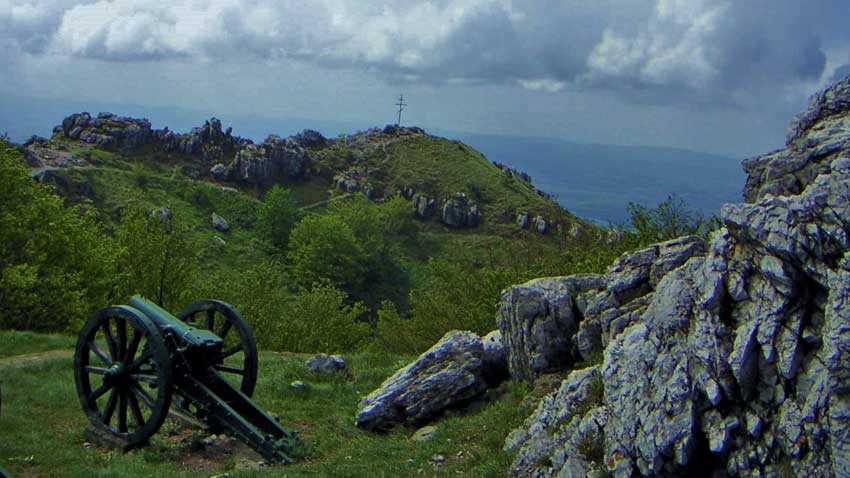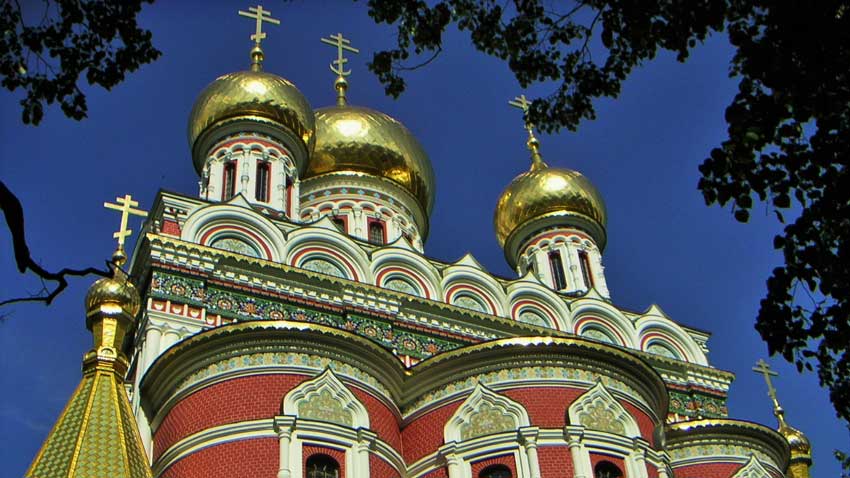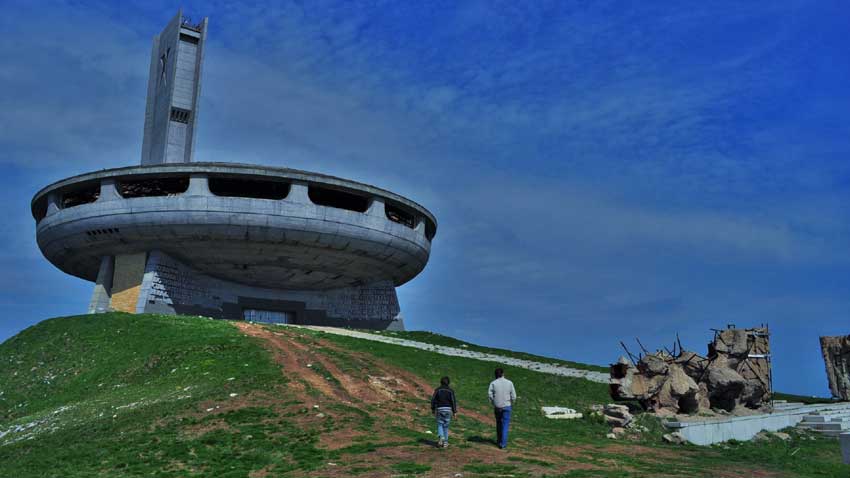There is a sacred place in the Balkan Mountain Range beloved by all Bulgarians. We are talking about the Shipka peak where the National Monument of Freedom was built. One of the most popular military monuments was built in honor of the Russian troops and the Bulgarian volunteers who lost their lives during the Russo-Turkish War in 1877-1878, which liberated Bulgaria from the Ottoman Yoke that lasted for five whole centuries. Here, over 130 years ago, some of the most crucial for the outcome of the war battles were held to the price of thousands of victims.
More than 11 thousand Russian and Bulgarian volunteers died during the epic battles on Shipka Pass. Right after the war, a special committee was established by the Russian army, which had to preserve the memory of the heroic deed of these soldiers for the generations to come. Thus, for a very short time, a total of 26 memorial signs, sculptures and copies of Russian batteries and dug-outs were made with the assistance of the Bulgarian community. Today these historical monuments are part of the Shipka-Buzludzha National Park-Museum. The Monument of Freedom on Shipka peak was built back in 1934 thanks to the donations of the Bulgarian people. The monument symbolizes the eternal aspiration for freedom and independence.

The monument is 31.5 meters high and was made of stone, just like a Medieval fortress. There is a huge bronze sculpture of lion on its northern wall and a sign reading: “To all who fought for liberty”. The ground floor of the monument was turned into a bone-vault. A marble sarcophagus containing the bones of 317 Russian soldiers who fell for the liberation of Bulgaria on Shipka Pass was placed there. The personal belongings (pictures, weapons, Russian military uniforms, orders and medals) of those who participated in the epic battles on Shipka are placed on the other levels of the monument. When you climb all seven floors of this tower-like monument, you reach a panoramic ground with a striking view towards the Bulgarian Rose Valley and other sites along the Balkan Mountain Range. We learn more about this sacred place from Maya Milanova who has been working for many years in the National Park-Museum Shipka-Buzludzha:
“Shipka is an open air museum situated right in the middle of the battle field. It is linked with some of the most epic moments of the Bulgarian history. The monument is situated in the center of the battle grounds and overlooks the whole region of these historical places linked with the defense of the Shipka Pass during the Russo-Turkish War. We make re-enactments of events linked with the peak of the Shipka Epopee during the August celebrations which are traditionally held on the Saturday between August 21 and 26. These re-enactments become more and more spectacular and attract many people. Nearly 100,000 Bulgarians come to this place on this day. Of course, the place is visited by many Russians as well. We have tourists from France, Spain, Germany, Greece and Israel, too.”
Once you climb Shipka, you would be definitely interested in the building which resembles the magic castle of Aladdin cartoon. We are talking about the Memorial Temple of The Birth of Christ whose golden cupolas glitter against the background of the greenery which covers this holy place. This memorial, too, was built with donations from the Bulgarian people in 1902 to glorify all departed soldiers during the Russo-Turkish War. The names of all Bulgarian volunteers who fell for the liberation of this country were written with golden letters on the monument walls. The crypt was turned into a bone-vault and keeps the remains of Russian soldiers who died during the battles for Shipka Pass.

The nearby Buzludzha peak is also part of the National Park- Museum Shipka-Buzludzha. Those who see this monument for the first time usually cry out with surprise, because they see against the background of cotton-white clouds a building that resembles… a UFO. However, this is not a meeting with aliens. It is a meeting with history instead. The biggest ideological monument from the Socialist period was unveiled in the 1980s on the same place where in 1891 the Bulgarian Workers’ Social Democratic Party was established. Its successor was the Bulgarian Communist Party which governed the country for 45 whole years, renamed later into the Bulgarian Socialist Party. Today, however, the monument in question sinks in full decay. Painted in graffiti and anti-communist messages, Buzludzha monument symbolizes a period of our new history which is still not entirely assessed by the modern Bulgarian society. The monument which falls apart under the influence of strong mountain winds attracts many photographers and foreign fans of the so-called dark tourism. These people are not afraid to sneak between the concrete cracks, in order to take surrealistic photos from the inside of the “space ship” which is covered with faded portraits and images of communist symbols and personalities who were denied by history.

English version: Kostadin Atanasov
Photos: Veneta NikolovaIt was in the vicinity of one of the Devnya karst springs in the Roman province of Lower Moesia (Moesia inferior) that the Roman Emperor Trajan (98-177 AD) stopped with his army. His sister Marcia sent her maid to fetch water, but..
In 2000 archaeologist Dr. Georgi Kitov and his team discovered, in the Roshava Chuka mound in the vicinity of Alexandrovo village near Haskovo, a Thracian tomb dated to the 4 th century BC. The high artistic value of the frescoes and the..
The feet of Thracians, Greeks, Macedonians, Romans, Illyrians, Celts, and Egyptians walked along the marble slabs of the polis square. Streets branched towards temples, ateliers and shops, while the forum was the place to look for justice and to..

+359 2 9336 661
